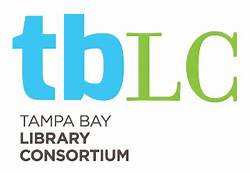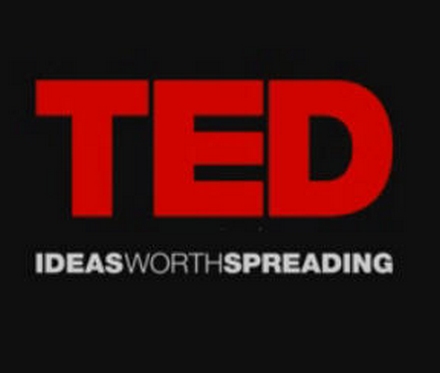There are obviously numerous buildings with “closed” signs on them as many of us continue to follow shelter-in-place guidelines in effect because of the coronavirus pandemic. But “closed” remains a relative term for many, e.g., libraries and other learning organizations, because the buildings may be closed, but the learning is continuing online. In offerings that sometimes are arranged so quickly that everyone’s head is spinning. And, sometimes, in offerings done effectively enough to leave learners with useful, memorable, engaging learning experiences that they can either immediately apply or can begin incorporating into learning opportunities with buildings once again sport open doors.
 I’ve been extraordinarily lucky, through all of this, to have had several projects underway that were primarily set up as online learning experiences. And one that was scheduled to begin with a daylong series of onsite sessions (in Tampa, Florida) and then continue with three subsequent one-hour online sessions. That train-the-trainer course, for learning co-conspirators (aka “adult learners”) through the Tampa Bay Library Consortium, was charmed from the beginning. Our onsite time together in Tampa took place less than two weeks before shelter-in-place suddenly became an all-too-familiar experience and temporarily put on hold most face-to-face training sessions. The first of the three webinars was held a week after shelter-in-place went into effect, and offered us an opportunity to begin exploring what trainer-teacher-learners could—and have to—do when their world suddenly goes topsy-turvy and many long-held beliefs and expectations fly out the window in a rapidly, ever-evolving learning environment. And the final webinar, completed earlier today, brought us full circle through explorations of how to design and facilitate online, onsite, and blended learning opportunities—by engaging in onsite, online, and blended learning opportunities using whatever tools we have available.
I’ve been extraordinarily lucky, through all of this, to have had several projects underway that were primarily set up as online learning experiences. And one that was scheduled to begin with a daylong series of onsite sessions (in Tampa, Florida) and then continue with three subsequent one-hour online sessions. That train-the-trainer course, for learning co-conspirators (aka “adult learners”) through the Tampa Bay Library Consortium, was charmed from the beginning. Our onsite time together in Tampa took place less than two weeks before shelter-in-place suddenly became an all-too-familiar experience and temporarily put on hold most face-to-face training sessions. The first of the three webinars was held a week after shelter-in-place went into effect, and offered us an opportunity to begin exploring what trainer-teacher-learners could—and have to—do when their world suddenly goes topsy-turvy and many long-held beliefs and expectations fly out the window in a rapidly, ever-evolving learning environment. And the final webinar, completed earlier today, brought us full circle through explorations of how to design and facilitate online, onsite, and blended learning opportunities—by engaging in onsite, online, and blended learning opportunities using whatever tools we have available.
 Some things, we confirmed together through a highly-interactive and collaborative approach, remain constant at a time when “emergency remote learning” is all around us: Following a learning model such as ADDIE (Assess, Design, Develop, Implement, Evaluate) and USER (Char Booth’s Understand, Structure, Engage, and Reflect) continues to provide strong foundations for effective learning. Preparation, flexibility, confidence, empathy, attention to detail, and humor all remain essential elements of what we do. Collaboration produces magnificent results, as we frequently saw when the learners were participants in shaping sessions in the moment; there were times when learners’ questions and suggestions inspired me to set aside activities I had planned and, on the spot, replace them with activities the participants themselves helped create and implement. And there were times when delivery/facilitation of a session changed on a dime, as when a slide deck I had planned to use for the first webinar wasn’t loading properly through screen-sharing—so we set aside the deck and simply covered the material in that online environment through virtual “face to face” conversations that pretty much replicated the spirit of what we had achieved a few weeks earlier in the physical learning space that was our initial meeting place.
Some things, we confirmed together through a highly-interactive and collaborative approach, remain constant at a time when “emergency remote learning” is all around us: Following a learning model such as ADDIE (Assess, Design, Develop, Implement, Evaluate) and USER (Char Booth’s Understand, Structure, Engage, and Reflect) continues to provide strong foundations for effective learning. Preparation, flexibility, confidence, empathy, attention to detail, and humor all remain essential elements of what we do. Collaboration produces magnificent results, as we frequently saw when the learners were participants in shaping sessions in the moment; there were times when learners’ questions and suggestions inspired me to set aside activities I had planned and, on the spot, replace them with activities the participants themselves helped create and implement. And there were times when delivery/facilitation of a session changed on a dime, as when a slide deck I had planned to use for the first webinar wasn’t loading properly through screen-sharing—so we set aside the deck and simply covered the material in that online environment through virtual “face to face” conversations that pretty much replicated the spirit of what we had achieved a few weeks earlier in the physical learning space that was our initial meeting place.
Learners had a variety of options available to them because a well-designed infrastructure. They had an online asynchronous meeting place—the Bridge learning management system—where they could easily find materials, updates, and guidance as to what they needed to be doing. They had an easy-to-use online platform for meetings—Zoom. They had a wonderful organizer/liaison/host/–TBLC Manager of Programs and Services Kelly McDonald. They had the opportunity to participate in the live webinars or participate asynchronously by viewing archived recordings of those webinars. And they had access to all PowerPoint slide decks, which included copious speaker notes so they could review topics of special interest to them.
Because they were engaged in further improving their own training-teaching-learning skills, they also had—and created—ample opportunities to practice what they were learning. While onsite, they engaged in impromptu presentations that helped them experiment with different ways to use their learning spaces. While online, they sometimes became presenters themselves by picking up themes from the typed chat and explaining and exploring those themes with their online collaborators. If there were missed opportunities for engagement, we would be hard-pressed to identify them because we jumped at those opportunities whenever we could.
The series concluded with plans for how that particular community of learning might continue through learner-directed interactions and collaboration; with reminders that the series had formally concluded but the learning would continue as they applied what they had absorbed; and with reminders that taking time to reflect upon our shared experiences would provide an additional platform for gaining all they could from all the effort we all expended together.
 Following my own guidance and longtime commitment to reflective learning, I took a few minutes, after logging out of the final session, to reflect on what the time with those learners inspired. And those moments of reflection rekindled memories of previous training-teaching-learning experiences, including one that began more than a decade ago when I had the unexpected pleasure of being paid to attend a TED conference. A friend who owns a bookstore here in San Francisco was the official onsite bookseller for the conference, and he offered me a last-minute chance to attend the conference as one of his employees in the bookstore. It was every bit as fun and inspirational as I expected it to be, and there was the obvious thrill of watching that spectacular live feed of TED talks on a screen in the bookstore and chatting with some of the presenters as they wandered through onsite bookstore.
Following my own guidance and longtime commitment to reflective learning, I took a few minutes, after logging out of the final session, to reflect on what the time with those learners inspired. And those moments of reflection rekindled memories of previous training-teaching-learning experiences, including one that began more than a decade ago when I had the unexpected pleasure of being paid to attend a TED conference. A friend who owns a bookstore here in San Francisco was the official onsite bookseller for the conference, and he offered me a last-minute chance to attend the conference as one of his employees in the bookstore. It was every bit as fun and inspirational as I expected it to be, and there was the obvious thrill of watching that spectacular live feed of TED talks on a screen in the bookstore and chatting with some of the presenters as they wandered through onsite bookstore.
One of the more memorable encounters was a brief face-to-face conversation with Matt Harding, who at the time was receiving tremendous, well-deserved attention and praise for his “Where the Hell is Matt?” videos showing him doing a brief, playful dance with volunteers in settings all over the world. (A video available online shows him explaining how he created his work.) I loved Matt. I loved the videos. And I loved the sheer joy that flowed through his work.
A year or two later, working with a training partner on a series of classes and workshops on a challenging topic, I was looking for a playful way to end one of the most difficult hour-long workshops, so suggested to my partner that we end that session with a “victory dance”–which, of course, involved showing one of Matt’s videos to the learners as a way of leaving them smiling.
We had no idea whether it would be successful, but we tried it. And we knew it had worked when, at the end of a subsequent workshop (the following day), someone smiled and said, “What? No victory dance today?”
I still love those videos. I still return to them occasionally. When I want to smile. Or when I want to celebrate something that has just occurred. And so, after facilitating the final webinar in the four-part blended (partially onsite, partially online) set of Train-the-Trainer sessions for the Tampa Bay Library Consortium earlier today, I decided to celebrate in private by watching a Where the Hell Is Matt? video and do a virtual victory dance to celebrate the successful conclusion of the latest successful collaboration with the learners who continually enrich my life in ways that surpass anything I will ever be able to offer them. And at the end of all of this, I’m left with one of the best suggestions I can offer to any training-teaching-learning colleague: let’s dance.
–N.B.: This is the eighth in a series of reflections inspired by colleagues’ reactions to the coronavirus and shelter-in-place experiences and our continuing interactions online.



 Posted by paulsignorelli
Posted by paulsignorelli 